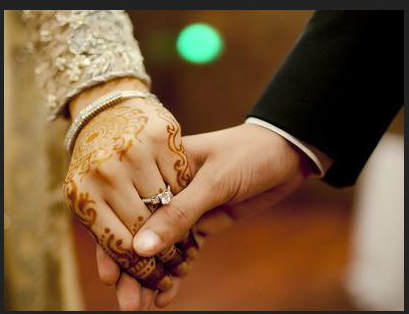
Saturday 10-04-2021
Sachin and Hema got married through the Times Matrimonial on Dec. 1, 2001. Sachin is 28, an IT professional, while Hema, 26, is a teacher in a school. Their courtship was hardly for about a month and they had practically no time to know each other, as they had been busy in the preparation for the wedding. On their wedding night, they discussed their lives and their goals. Amongst various things they discussed were the problems in the marriage that their friends were facing. The questions that they were asking themselves were: Is there any reasonably foolproof way by which they could avoid marital problems? Was there anything that they could do to enjoy the full benefits of the marriage and avoid relational difficulties that so many young couples seemed to have nowadays?
Over the past few years, the institution of marriage has undergone substantive changes. Any approach that works to bring changes in the marriage has to include the nature of the relationship, the social and cultural context in which the persons live and life cycle of the couple. For Sachin and Hema – the goal is to live life in a way that there is an interlocking of ideas, which takes care of the underlying weaknesses and emotions of each spouse and this can contribute to the formation of a strong marriage. First of all some absolute no-no – 1) there is lack of commitment to the relationship. 2) One partner is already involved with another person. 3) There is an inability to tolerate the weaknesses of the other person.
You have to recognize the special nature of the bond of marriage, the implications of the legal aspects of it, the existence of children and the impact of what happens in the marriage on the family members including children. Marriage is like a storehouse of items that everyone wants – love, sex, status and life support. Persons trade with one another for those commodities, and the nature of the trade defines the relationship. For you, the store should be relatively closed: that is, all the good things should be in the same location, and each exchange should affect the other. These exchanges should help you to understand the context of this relationship and find a framework to make rational bargains that lead to facilitating an improved relationship. You have to build an attachment with each other on the lines of the intimacy and understanding that is present in childhood between a parent and a child (true for both and not only one partner). There is an inborn drive for attachment in all, which, when thwarted, leads to feelings of insecurity and conflict. Conflicts may arise when coercive techniques are used rather than positive reinforcements. The marital bond begins with the fusion between the two of you and progresses to the most mature form of mutual interdependence. You have to view the relationship in terms of the behavior that both or any one of you use to get what he or she wants or thinks that he or she needs. The major impact will be made by the way that both of you express your emotions. Expression of context-based emotions will always work positively. When one person expresses feelings in the presence of the other, the perceptions of that person may change and the expressing person is seen as taking responsibility for his or her feelings. One of the ways in which you can understand your relationship is like a system: different from its parts and from the sum of its parts. The interaction of the parts is central to the system: so the interaction between the two of you is central to both of you as individuals. One person’s behavior will induce the other’s behavior in a reciprocal fashion. You also have to look for the transgenerational forces that nurture attachments to your own families and inhibit freedom of action in the marriage.



